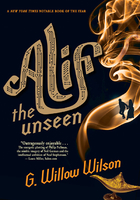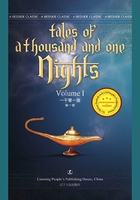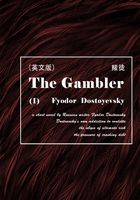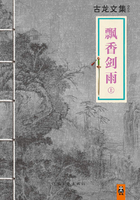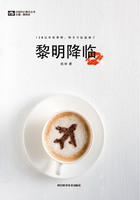BALLOONING
WHAT HAPPENED
WHEN A SHEEP, A DUCK, AND A ROOSTER
FLOATED UP IN A HOT-AIR BALLOON? BELIEVE
IT OR NOT, THEIR TRIP LED TO HUMAN FLIGHT.
The first time humans escaped Earth's gravity was in a brightly colored hot-air balloon. Although people in Asian cultures had launched small hot-air balloons centuries before, the first ride into the sky wasn't until 1783. In September of that year two French brothers—Joseph-Michel and Jacques étienne Montgolfier, who were papermakers—experimented with flight by placing a sheep, a duck, and a rooster into a gondola attached to a balloon that was made of paper and fabric. Up they went! This occurred near Paris, at the Palace of Versailles, with King Louis XVI and Queen Marie Antoinette watching. After eight minutes the balloon and its passengers landed safely. They had traveled two miles! Two months later, on November 21, the brothers sent two human passengers up in an untethered balloon. They were the first humans to fly.
The brothers flew their balloons many other times. Crowds gathered to watch. Benjamin Franklin and other Americans who were in Paris at the time to negotiate a peace treaty with Britain witnessed the balloon flights. Ten years later balloons came to America. The first flight was launched from a prison yard in Philadelphia, and President George Washington and four future presidents were watching. Washington sent a letter in the balloon for delivery to the owner of the property wherever the balloon landed. Was this the first airmail?
Before hot-air balloons, human beings had never flown. Flying in balloons and seeing Earth from a new perspective changed people's thoughts on geography, science, politics, and society. Balloons represented freedom of movement. A person in a balloon flew where the wind blew him. He did not have to follow a road or a river. From a balloon one could not see political boundaries. The precise lines where one country ended and another began became blurred.
Ballooning caught the imagination of the public. Balloon-inspired hairstyles and clothing became all the rage in the final years of the eighteenth century. Craftsmen and merchants produced jewelry, hats, fans, snuffboxes, matchboxes, needle cases, dinnerware, wallpaper, birdcages, chandeliers, clocks, furniture, and a host of other balloon-themed objects to attract the eye (and open the pocketbook) of customers. The fad lasted into the 1800s.
A FASHIONABLE FRENCHWOMAN FROM THE LATE 1700S.
The techniques of lighter-than-air flight that were discovered centuries ago remain the guiding principles of ballooning today. This type of flight grew out of the Scientific Revolution, a period of great advances. Studies of the atmosphere during the 1600s led to Robert Boyle's description of the relationship between volume, temperature, and pressure and a new understanding of air. This inspired the possibility of lighter-than-air flight. Then in the 1700s chemists began identifying the gases in the atmosphere. Once hydrogen was isolated, the idea of filling a bag with this light gas followed. It was lighter than other gases in the air and would therefore float. The inventors of the balloon based their work on a new concept called the "scientific method": Educated guesses are made and then tested.
Very soon after the first flight, people recognized the balloon's potential military value. From a balloon, soldiers could spy on the enemy. The army of revolutionary France first employed observation balloons at the battles of Fleurus and Charleroi in 1794.
Professor Thaddeus Lowe (1832–1913) was an American pioneer in ballooning and is considered the father of aerial reconnaissance in the United States. At the age of eighteen he attended a chemistry lecture about lighter-than-air gases. He became fascinated with balloons and eventually began offering rides in tethered balloons at fairs. By the late 1850s Lowe was known for building balloons. He even dreamed of flying one across the Atlantic Ocean. One of his balloons, named the City of New York, measured 103 feet in diameter. During a test flight, Lowe traveled from Cincinnati to South Carolina: The wind blew him 400 miles off his planned course to Washington, D.C.
THIS WOODCUT ILLUSTRATION SHOWS THADDEUS LOWE'S CITY OF NEW YORK, DESIGNED TO CROSS THE ATLANTIC, IN 1859.
While the start of the Civil War ended his quest to cross the Atlantic, it brought another opportunity. At the suggestion of the head of the Smithsonian Institution, Lowe gave a demonstration to President Abraham Lincoln, showing how the Union army could use balloons to track enemy movements and how balloons could help mapmakers draw more accurate maps. (Today the National Air and Space Museum in Washington, D.C., stands near the spot where Lowe gave his demonstration.) Lincoln approved the first military aeronautical unit in U.S. history, and in 1862 Lowe launched the first military balloon flight for the Union army.
PROFESSOR THADDEUS LOWE DURING THE CIVIL WAR.
ILLUSTRATION SHOWING THADDEUS LOWE DEMONSTRATING HIS BALLOON OVER WASHINGTON, D.C., JUNE 18, 1861. THE SMITHSONIAN INSTITUTION CASTLE BUILDING IS IN THE BACKGROUND.
Military forces around the world soon incorporated Lowe's aerial reconnaissance techniques. But Lowe was sick of war. He moved on to other interests and never did attempt a balloon flight across the Atlantic Ocean. That feat wasn't accomplished until more than a hundred years later, in 1978, when a balloon named the Double Eagle II flew from Maine to Paris in six days.
Vehicles of flight have changed a great deal since the first humans ascended in an untethered balloon. But hot-air balloons continue to offer humans a look at Earth from a different perspective.
THADDEUS LOWE IN A BALLOON DURING THE BATTLE OF FAIR OAKS, ATTRIBUTED TO PHOTOGRAPHER MATTHEW BRADY.


